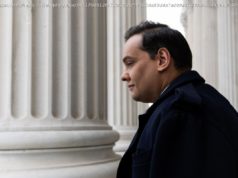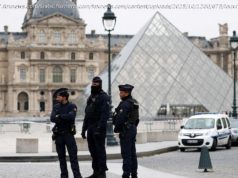The 5-4 decision is the court’s first substantive ruling on a Trump administration policy.
The Supreme Court ruled Tuesday that President Trump has the authority to ban travelers from certain majority-Muslim countries if he thinks that it is necessary to protect the country, a priority of the president’s since his first week in office.
The vote was 5 to 4, with conservatives in the majority and Chief Justice John G. Roberts Jr. writing the opinion.
Lower courts had struck down each of the three iterations of the president’s travel ban, the first of which was issued just in January 2017. But the administration had been hopeful about the Supreme Court, because it had previously decided to let the ban go into effect while considering the challenges to it.
Roberts wrote that the presidential proclamation that led to the ban “is squarely within the scope of presidential authority.” And he rejected arguments that it was based on the predominant religion of most of the affected countries.
“The Proclamation is expressly premised on legitimate purposes: preventing entry of nationals who cannot be adequately vetted and inducing other nations to improve their practices,” he wrote. “The text says nothing about religion.”
The high-profile case called for the justices to balance their usual deference to the president on matters of national security with a never-before-seen barrage of campaign statements, tweets, retweets and comments from the president tying Muslims to terrorism.
It was the first time the high court had considered the merits of a policy that has consumed the administration since its start. It raised questions about the judiciary’s role in national security issues usually left to the political branches.
Lower courts have found that the initial order and each new version since exceeded the president’s authority granted by Congress and was motivated by Trump’s prejudice against Muslims.
The current ban, issued last fall, barred various travelers from eight countries, six of them with Muslim majorities. They are Syria, Libya, Iran, Yemen, Chad, Somalia, North Korea and Venezuela. But restrictions on North Korea and Venezuela were not part of the challenge. Chad was later removed from the list.
The administration said the third edition of the ban responds to the judicial criticisms of the first two and was the result of a “worldwide review of the processes for vetting aliens seeking entry from abroad.”
The resulting ban was no different from what past presidents have occasionally imposed, the administration said. Congress has granted authority that the president “may by proclamation, and for such period as he shall deem necessary, suspend the entry of all aliens or any class of aliens” after a finding that the entry “would be detrimental to the interests of the United States,” the administration told the court.
But challengers, led by the state of Hawaii, pointed to another section of the law, which says a person may not be denied a visa “because of the person’s race, sex, nationality, place of birth, or place of residence.”
Allowing the president to ban citizens of a nation, the challengers said, amounts to giving the president a “line-item veto over the entire immigration code.”
The justices were reviewing a unanimous ruling from a three-judge panel of the U. S. Court of Appeals for the 9th Circuit in San Francisco. That panel said the third version of the travel ban suffered from the deficiencies of the first two — that Trump had again exceeded his lawful authority and that he had not made a legally sufficient finding that entry of those blocked would be “detrimental to the interests of the United States.”
The U. S. Court of Appeals for the 4th Circuit in Richmond struck down the ban on the constitutional question. The 9-to-4 decision took a deep dive into Trump’s statements and tweets since he became president and concluded that the proclamation, like the first two, was motivated not by national security concerns but by antipathy toward Muslims.
The case is Trump v. Hawaii.
This story will be updated.
Send questions/comments to the editors.






